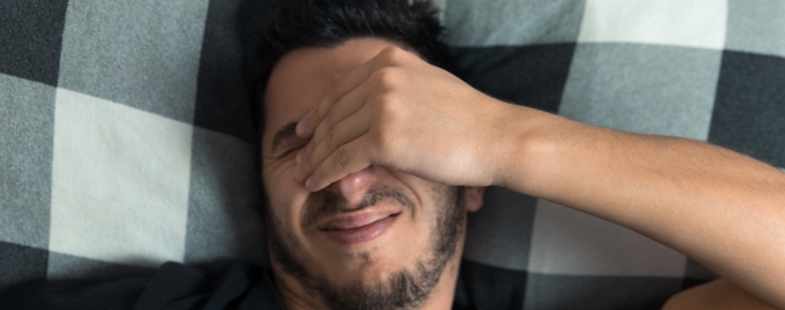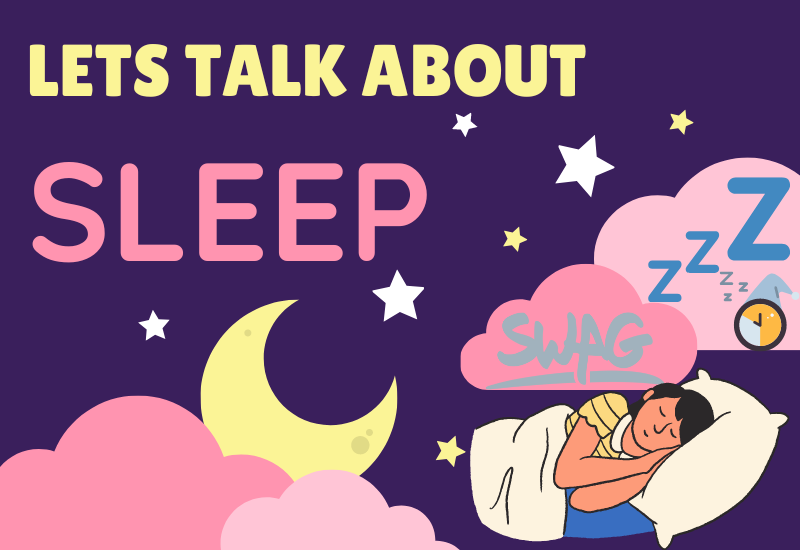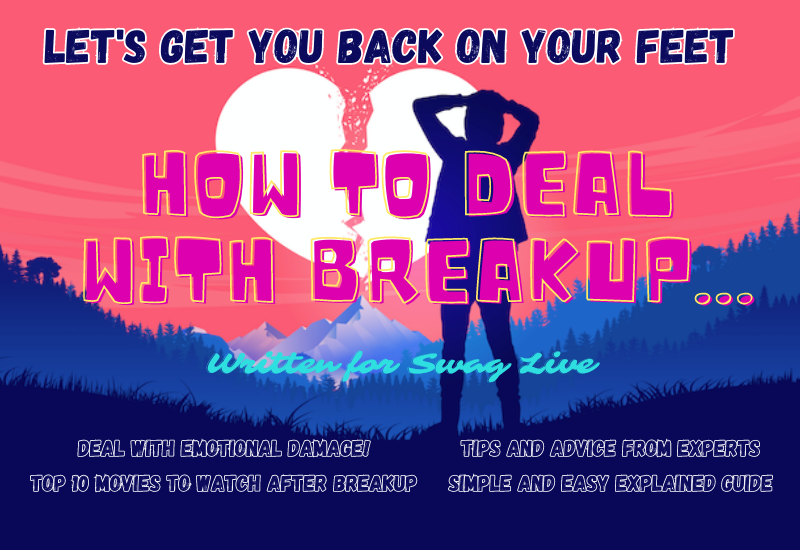Sometimes we realize we are like cats, sleeping 33% of our lives away, if you are having a life that is. Some even top the charts and reach 50% and above! Do we sleep too long, or too short? How do we sleep?
Since the dawn of humankind, sleeping has been an integral part of our existence. As we lay our weary heads upon our pillows each night, it’s intriguing to explore how sleep has evolved over the course of history. From ancient sleeping positions to modern-day sleep aids, this captivating journey will take us through the ages, unraveling the secrets of our slumber. In this Swag Article, we will discuss more about the mysteries of sleeping, and why we spent so many hours doing it.
Ancient Sleep Rituals and Their Sleeping Positions

In ancient civilizations, sleep was not merely a passive state, on the contrary, it was a sacred ritual. From the Egyptians to the Romans, people approached sleep with reverence and adopted various sleeping positions. The Egyptians favored a supine position, aligning the body with the energy of the Earth. The Romans, on the other hand, indulged in luxurious reclining beds, adopting the “kline” position to promote relaxation. The Dutch people we’re sleeping sitting up, inside ‘bedstees’ (little spaces in the wall they would sleep in) to prevent their blood from going to their brain and dying in their sleep.
In the Medieval Era, Sleep Was always Interrupted
The medieval era marked a tumultuous period for sleep. People faced numerous challenges, including uncomfortable beds, nocturnal disturbances, and even fears of nocturnal creatures like witches and demons. Sleepers resorted to superstitions and talismans to ward off these perceived threats, and their sleep was often disrupted and fragmented. During the medieval era, sleep was often a challenging endeavor, particularly for peasants and the lower classes of society. Let’s embark on a journey into their sleep experiences, exploring the conditions they faced and the fascinating realm of dreams and nightmares.
Uncomfortable Sleeping Conditions
For peasants and the poor, sleep was usually an uncomfortable affair. Humble dwellings lacked the luxuries we associate with modern bedrooms. Beds consisted of simple straw mattresses or pallets filled with leaves or hay, offering minimal support and cushioning. Coarse blankets or animal skins served as coverings, often insufficient to ward off the chill of cold nights.
In addition to the physical discomfort, peasants and poor people faced numerous nocturnal disturbances. The absence of proper insulation and the prevalence of thatched roofs meant that sleepers were susceptible to unwelcome visitors, including rodents, insects, and even bats. The constant scurrying, buzzing, or flapping wings could easily interrupt their slumber.
There was much unknown about dreaming
And let’s not forget about their Fear of Nocturnal Creatures. Superstitions and fears surrounding the night and its inhabitants were prevalent during the medieval era. Peasants and the poor were deeply influenced by folklore and religious beliefs, which attributed nocturnal activities to malevolent creatures like witches, demons, and even vampires. Such fears could generate anxiety and contribute to restless nights filled with trepidation. Despite the hardships of sleep, dreams, and nightmares were an intriguing aspect of medieval slumber. Dreams were often seen as messages from a higher power, interpreted as omens or prophecies. They carried symbolic meanings and were considered essential for understanding one’s fate. However, nightmares were viewed with fear and were associated with demonic forces or spiritual torment.
I am a sleepwalker myself.
Although records of specific sleep disorders are scarce, it is likely that conditions like insomnia, sleepwalking, and night terrors were widespread and powerful. Medieval medical texts often prescribed herbal remedies and rituals to address sleep-related issues. Common remedies included drinking herbal concoctions, such as chamomile or valerian, or placing aromatic herbs like lavender under pillows to induce sleep and ward off nightmares.
The medieval era presented peasants and the poor with significant obstacles to restful sleep. Amidst discomfort, overcrowding, and superstitious fears, their nights were often restless and disrupted. Yet, within the realm of dreams and nightmares, their imaginations flourished, reflecting their beliefs, aspirations, and anxieties. Exploring their sleep experiences offers a glimpse into the hardships and resilience of those who lived during this intriguing historical period.
Scientific Perspectives on Sleep

With the advent of the scientific revolution, sleep began to be scrutinized more closely. The 17th and 18th centuries witnessed pioneers like Robert Hooke and Christian Kramp, who studied sleep’s physiological aspects. It was during this time that the concept of sleep stages and the understanding of REM (rapid eye movement) sleep began to emerge. People were still growlingly fascinated by the science behind sleeping, and more understanding was generated regarding sleeping problems in general. Sleep became an important segment of life. The quality improvements of sleep are parallel to an improvement in the population, economy, and general demographics. The better you sleep, the more functional you are with better performances.
The Industrial Revolution brought significant changes to society, including altered sleep patterns and making changes we feel today. The demands of factory work and the introduction of artificial lighting disrupted the natural sleep-wake cycle. Many people, especially workers, experienced sleep deprivation, leading to negative consequences on health, productivity, and overall well-being. The construction of a regulated society without keeping sleep in mind presents unexpected challenges. From fatal job errors with deadly effects to major disasters with millions of people in danger.
Did you Know…Fact about Sleeping!

When it comes to sleep, different countries have varying patterns and durations. While it is challenging to determine with absolute certainty which country sleeps the most, based on available research and surveys, one country often cited for its relatively longer sleep duration is the Netherlands.
The Netherlands has consistently ranked high in studies measuring sleep duration and quality. Several factors contribute to this trend:
- Work-Life Balance: The Netherlands is known for its emphasis on work-life balance and prioritizing leisure time. Dutch culture places a strong emphasis on personal well-being, and individuals often strive to maintain a healthy equilibrium between work and leisure activities. This focus on balancing responsibilities allows for more time dedicated to rest and relaxation, including obtaining sufficient sleep.
- Flexible Work Hours: The Netherlands has implemented policies promoting flexible work arrangements, such as part-time work, job sharing, and remote work options. These arrangements provide individuals with more control over their schedules, allowing for better time management and potentially more opportunities for adequate sleep.
- Strong Social Support Systems: Dutch society places a high value on social support systems. Families, communities, and government structures work together to create an environment that supports the well-being of individuals. This social support network may contribute to reduced stress levels, enhancing the ability to achieve restful sleep.
- Cycling Culture and Active Lifestyles: The Netherlands is renowned for its cycling culture and active lifestyles. Regular physical activity has been linked to better sleep quality. The Dutch embrace active transportation, with many people cycling for their daily commute or leisure activities. Engaging in regular exercise promotes overall well-being, potentially leading to better sleep.
- Sleep Education and Awareness: The Netherlands has placed a strong emphasis on sleep education and awareness campaigns. The importance of sleep health is widely promoted, with initiatives aimed at educating the public about the benefits of sufficient sleep and strategies for improving sleep hygiene.
Now let’s find out what sleep really is!
As you prepare for a restful night’s sleep, you engage in a series of activities to signal to your body that it’s time to wind down. Things such as brushing your teeth, washing your face, and changing into comfortable sleepwear. This routine helps condition your mind and body for sleep. Dim the lights, adjust the room temperature to a comfortable level, and minimize noise to create a serene sleep environment. Disconnect from electronic devices, such as smartphones, tablets, and computers, at least 30 minutes before bed. You will be Drifting into Slumber shortly. As you settle into your preferred sleeping position, your muscles relax, and your body gradually decreases its activity levels. our brain transitions from the alertness of the waking state to slower brainwave patterns associated with sleep. The shift begins with alpha waves and progresses to theta waves, indicative of drowsiness and early sleep stages.
As you continue to drift deeper into sleep, you pass through various sleep stages. These stages include non-rapid eye movement (NREM) sleep, characterized by slower brainwaves and divided into three stages (N1, N2, and N3), and rapid eye movement (REM) sleep, where vivid dreams occur.

Let the Restoration Begin.
During sleep, your body engages in essential restorative processes that contribute to your overall health and well-being. Sleep promotes the repair and regeneration of tissues throughout your body. Growth hormone is released, aiding in muscle repair and growth, as well as the restoration of various organs and systems. While you sleep, your brain consolidates and strengthens memories, integrating information acquired during the day. This process enhances learning and memory retention. Sleep plays a crucial role in regulating hormone production and balance. It influences the release of hormones such as melatonin, cortisol, and leptin, which affect sleep-wake cycles, stress response, and appetite regulation, respectively. Adequate sleep supports a healthy immune system, helping to ward off infections and diseases. During sleep, your immune system releases cytokines and produces antibodies that protect and defend your body.

Open your eyes, a new day has begun!
After a restorative night’s sleep, your body gradually transitions from sleep to wakefulness. As you near the end of your sleep cycle, you typically go through a REM sleep phase. During this stage, vivid dreams occur. Awakening from REM sleep can sometimes result in the recall of dream content. As you transition from sleep to wakefulness, your brain activity increases, accompanied by a shift in brainwave patterns to faster frequencies associated with alertness and consciousness. Ideally, you awaken naturally without the need for an alarm clock. Natural awakenings indicate that you have completed a sufficient sleep cycle, allowing your body to feel refreshed and energized upon waking. Finally, you open your eyes, and your visual senses engage with the surrounding environment. Your body and mind feel rejuvenated, ready to embark on a new day.
We know you want to get some sleep, so we end here.
Here are some fun facts about sleep that you may want to know about. As I tried and I did succeed, I did not want to write about Nightmares and Bad Sleeping Patrons. I will, however, write soon more about the topic of sleeping and touching the Dreaming Item.
- Sleepwalking Adventure: Sleepwalking, also known as somnambulism, is a phenomenon where a person engages in complex activities while asleep. People have been known to sleepwalk, cook, clean, and even drive cars while in a sleepwalking state.
- Dream Catcher: On average, people spend about six years of their lives dreaming. That’s a lot of time spent in the fascinating realm of dreams!
- Sleepy Animal Kingdom: Humans aren’t the only creatures that need their beauty rest. Animals also have their sleep habits. For example, dolphins sleep with one eye open, and certain species of birds can sleep while flying.
- Microsleep Moments: Have you ever experienced a momentary lapse in attention or a sudden head nod during a boring meeting or class? That could be a microsleep—a brief episode of sleep that lasts just a few seconds. Microsleep can occur when the brain momentarily shuts down due to sleep deprivation or monotony.
- Sleepy-Time Record: The longest recorded period without sleep is 11 days! This record was set by a high school student as part of a science fair experiment. However, it’s important to note that prolonged sleep deprivation can have severe health consequences, and it’s not recommended to attempt such feats.
- Sleeping Upside Down: Bats are the only mammals capable of sustained upside-down sleep. Their unique anatomical adaptations allow them to sleep while hanging upside down, defying gravity.
- Famous Nappers: Many famous personalities throughout history were avid nappers. Albert Einstein, Leonardo da Vinci, and Winston Churchill were known to take regular naps to recharge their minds and enhance productivity.
- Sleep and Creativity: Research suggests that sleep can enhance creative thinking and problem-solving abilities. Getting a good night’s sleep can help boost your creativity and improve your cognitive performance.
- Hibernation Wonder: Some animals, such as bears and hedgehogs, enter a state of hibernation during the winter months. During hibernation, their metabolic rate and body temperature decrease significantly, allowing them to conserve energy.
- Snoring Symphony: Did you know that some people have turned their snoring into music? There is a musical genre called “snore-core” where composers and artists create compositions using samples of snoring sounds.
Sleeping is an art – 30 Free Tips
In the quest for better sleep, incorporating healthy habits and prioritizing our well-being is key. By establishing a consistent sleep schedule, creating a serene sleep environment, and adopting relaxing bedtime routines, we can set the stage for restful nights. Avoiding stimulants, such as caffeine and screens, and managing stress levels are crucial steps in achieving quality sleep. Additionally, practicing self-care through exercise, relaxation techniques, and seeking professional help when needed can make a significant difference. Remember, sleep is a vital pillar of overall health and well-being. By implementing these tips and personalizing them to suit our individual needs, we can unlock the transformative power of rejuvenating sleep. Here we have 30 tips in a row!
- Establish a consistent sleep schedule by going to bed and waking up at the same time every day.
- Create a relaxing bedtime routine to signal to your body that it’s time to sleep.
- Avoid consuming caffeine and nicotine close to bedtime, as they can interfere with sleep.
- Limit your exposure to screens (e.g., phones, tablets, TVs) in the hour before bed as the blue light can disrupt sleep.
- Ensure your bedroom is dark, quiet, and at a comfortable temperature for sleeping.
- Invest in a comfortable mattress and pillows that support your sleeping position.
- Use your bed primarily for sleep and intimacy, avoiding activities like work or watching TV in bed.
- Exercise regularly, but try to finish your workout at least a few hours before bedtime.
- Avoid consuming large meals, spicy foods, or excessive fluids close to bedtime to prevent discomfort or disruptions.
- Consider establishing a relaxation routine, such as reading a book or taking a warm bath, before bed.
- Use blackout curtains or an eye mask to block out any unwanted light in your bedroom.
- Create a peaceful sleep environment by using white noise machines or earplugs to mask disruptive sounds.
- Keep a worry journal or practice relaxation techniques like deep breathing or meditation to calm your mind before bed.
- Keep a comfortable and consistent sleep posture throughout the night.
- Limit daytime napping, especially in the late afternoon or evening.
- Avoid using electronic devices as an alarm clocks; opt for a regular alarm clock instead.
- Avoid consuming alcohol close to bedtime, as it can interfere with your sleep patterns.
- Manage stress levels through exercise, stress-reduction techniques, and seeking support when needed.
- Ensure your bedroom is well-ventilated and has a cool temperature, as a cooler environment promotes better sleep.
- Invest in comfortable and breathable sleepwear to enhance your comfort during sleep.
- Avoid clock-watching while in bed, as it can increase anxiety about not falling asleep.
- Create a comfortable and supportive sleep environment by decluttering your bedroom.
- Avoid engaging in stimulating or stressful activities right before bed.
- Limit your fluid intake in the evening to minimize nighttime bathroom trips.
- Experiment with relaxing aromatherapy techniques, such as using lavender essential oils or sprays in your bedroom.
- If you’re unable to fall asleep after 20-30 minutes, get out of bed and engage in a relaxing activity until you feel sleepy.
- Keep a sleep diary to track your sleep patterns, identifying any potential factors affecting your sleep quality.
- Consider using a weighted blanket or other sleep aids if you find them helpful.
- Ensure you’re getting enough natural light exposure during the day to regulate your circadian rhythm.
- If you’re consistently struggling with sleep, consider consulting a healthcare professional for further evaluation and guidance.
Remember, not all strategies will work the same for everyone, so it’s essential to find what works best for you and your specific sleep needs.
Resources: WikiPedia and written by Tjeezers




